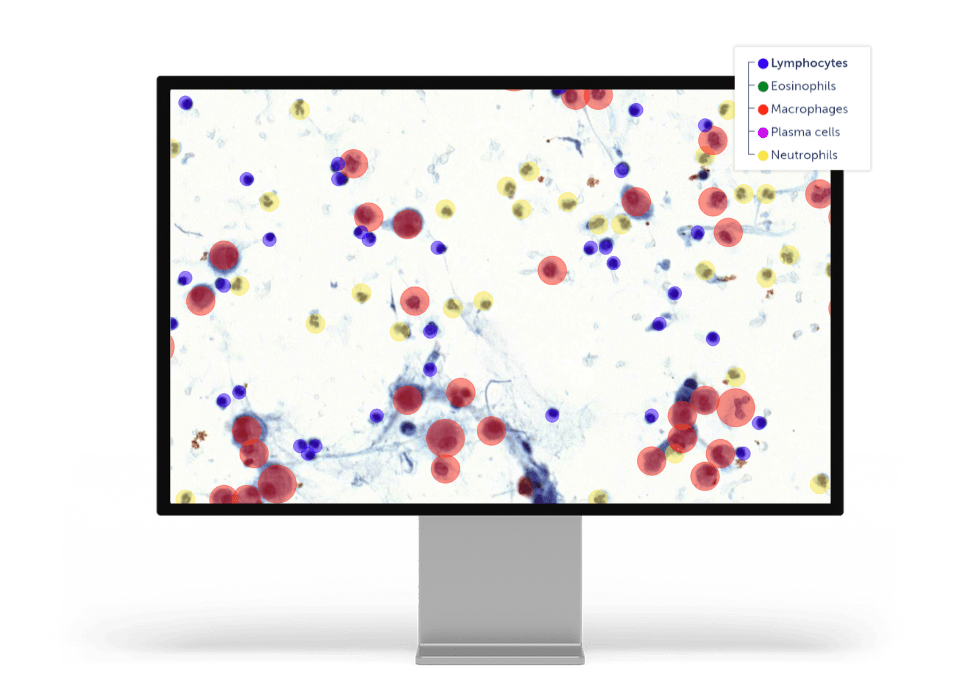Unlock the full benefits of a digitized workflow
AI-supported quantification and scoring
Automation of repetitive or difficult tasks for a pathologist to review, adjust as needed, and sign out.
Efficient viewing of whole-slide images, hotspots and regions
Fast viewing of analysis results on whole slide images or selected areas for more precise examination and scoring.
Collaboration with colleagues
Share cases, findings, and markings easily for consultation and collaboration with colleagues.
Seamless integrations
Integrations with any existing laboratory infrastructure unlock the full benefits of a digitized workflow.

Veterinary diagnostic AI applications
Examples of applications to support veterinary pathology diagnostics
- Mitoses
- Gastrointestinal
- H. pylori in stomach samples
- Immune cell counter
- Goblet cell detector
- Bronchoalveolar lavage cytology
- Tumor margin
- Tumor detector
- Bone marrow cell lineages
Aiforia® Create – AI development tool
Learn more about Aiforia's the most versatile tool for developing deep learning AI models for image analysis.
CASE EXAMPLE
Finn Pathologists case study: canine mast cell tumor – Ki-67 scoring
- Mast cell tumor (MCT) is the most common skin tumor in dogs; it can also affect other areas of the body, including the spleen, liver, gastrointestinal tract, and bone marrow.
- Ki-67 is a nuclear protein only expressed in cells that are dividing. Ki-67 expression can be detected with an antibody, measuring cell proliferation.
- The frequency of Ki-67 expression is significantly associated with prognosis.
- Using outcome data, a cut-off threshold (Ki-67 labeling index) is calculated. Above the threshold, the prognosis for local recurrence and overall patient survival is poorer.
_1_logo%201.png?width=700&height=600&name=Veterinary%20Diagnostic%20AI%20Applications_Finn%20Pathologists_IHC%20-%20MIB-1%20(Ki-67)_1_logo%201.png)
Contact us
Discover the power of AI for pet diagnostics
Discover how Aiforia’s AI can enhance your veterinary diagnostic process, tailored to your lab’s unique needs.
We will help you understand:
- How AI-assisted image analysis can increase efficiency, precision, and consistency in a case-centric workflow.
- The limitless possibilities Aiforia® Platform offers and the suitable AI applications for your workflow.
Fill in the form, and one of our experts will contact you shortly.